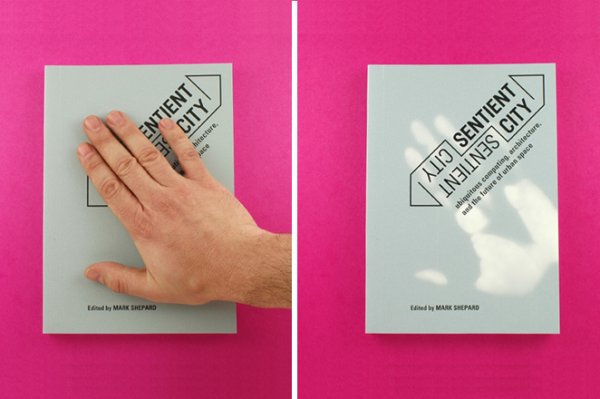The living city. It’s a phrase or a variation on a phrase you’ve probably heard dozens of times to describe the urban realm. Perhaps we use the living descriptor because we like to anthropomorphize evolutionary processes; take Jane Jacobs’s iconic title The Death and Life of Great American Cities as an example. Or maybe it’s because cities are seething with people—the churn of humanity on the streets. Here, we can look to The Social Life of Small Urban Spaces, William H. Whyte’s seminal sociological study of public space for a titular equivalent. For sure, the life metaphor has sparked imaginative discourse: cities walk (Archigram) and go a bit mad (Koolhaas), but as digital devices and technological infrastructures increasingly mediate the way we live in cities, the language by which we describe urbanism shifts accordingly. The city is less akin to organisms and more to software, thus subject to coding, versioning, and hacking, like any computer program. Read More …

Essay: “Comforts, Crisis, and The Rise of DIY Urbanism” in Sentient City: Ubiquitous Computing, Architecture and the Future of Public Space, edited by Mark Shepard.
Sentient City: ubiquitous computing, architecture and the future of public space is an edited volume of case studies and essays that critically address the evolving relations between contemporary technologies and urban life.
This book expands on an exhibition that I curated in the fall of 2009 titled Toward the Sentient City. Documentation (text, images, diagrams, photographs) of the projects realized for the exhibition is combined with that of preliminary experiments, background research, material studies, interaction prototypes, and the subsequent analysis and interpretation of the data generated by the projects’ implementation.
Complementing these case studies, a series of critical essays reflect on the larger implications of ubiquitous computing for the way we think about architecture in general and the design of urban space in particular. Building on a series of responses to the exhibition contributed by writers and theorists of architecture, urbanism, media theory, technology and related fields, these critical reflections are intended to help the reader situate what may at first appear to be novel questions about the intersection of ubiquitous computing, architecture and urban space in terms of more long-standing and established discourses on the technological mediation of urban life and the role architects, urban designers, and technologists alike might play in shaping its future evolution.
Case studies by David Benjamin, Soo-in Yang, and Natalie Jeremijenko; Haque Design + Research; SENSEable City Lab; David Jimison and JooYoun Paek; and Anthony Townsend, Antonina Simeti, Dana Spiegel, Laura Forlano, and Tony Bacigalupo.
Essays by Keller Easterling, Matthew Fuller, Anne Galloway, Dan Hill, Omar Khan, Saskia Sassen, Trebor Scholz, Hadas Steiner, Kazys Varnelis, Martijn de Waal, and Mimi Zeiger.
Published by the Architectural League of New York and MIT Press.
It’s been two and a half years since the financial crisis crippled the global economy. During the long slump that’s followed, the architecture, design, and construction sectors have threatened to hit bottom over and over, but a real recovery, which would signal a final flattening out, never seems to materialize. While some firms show signs of stabilization — but only after massive job shedding in 2008 and 2009, and largely thanks to projects in China and the Middle East — most practitioners are just eking by. [1]
In the spring of 2009, I interviewed AIA chief economist Kermit Baker for a piece in Architect magazine, on the likely prospects for young architects graduating into a recession. Based on figures from previous recessions, Baker painted a grim picture, and I wrote:
“Baker cites figures from the U.S. Department of Labor website: from the peak of employment in July 1990 to the lowest point in January 1993, 14.6 percent of positions at architecture firms were eliminated. The 30-month trough outlasted the overall national recession, which ended in late 1992. Baker notes that the downturn early in this decade is recorded as lasting from March through December 2001, but there was no upturn in design activity until 2004 and construction picked up only in late 2004 and 2005 — a chilling four years down to generate four subsequent years of growth.” [2]
The sluggish return we’re now experiencing seems discouragingly consistent with Baker’s models. If we follow his timeline, there’s still another couple of years left before we can expect any recovery within the design professions; and once we do, the profession will look like nothing we’ve ever seen before. So, what to do in the interim? Wringing hands over the misdirected funding and lost opportunities of the stimulus package is simply depressing. Read More …